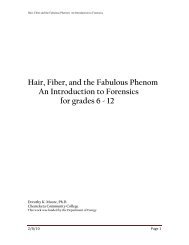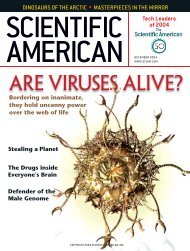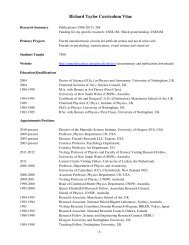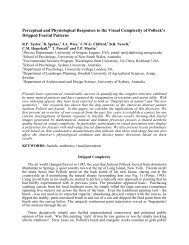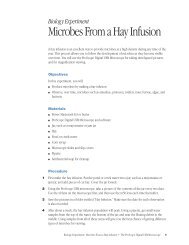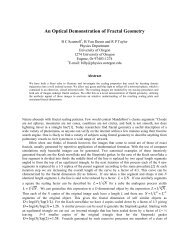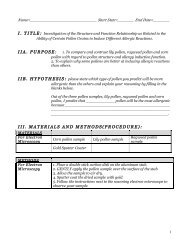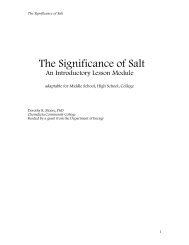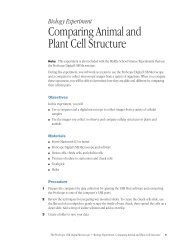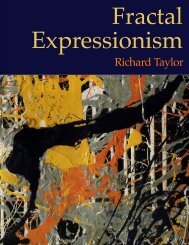Richard Philip Taylor - Materials Science Institute - University of ...
Richard Philip Taylor - Materials Science Institute - University of ...
Richard Philip Taylor - Materials Science Institute - University of ...
Create successful ePaper yourself
Turn your PDF publications into a flip-book with our unique Google optimized e-Paper software.
non-linear scientists, mathematicians, psychologists, architects, artists and linguists) and countries<br />
(USA, Canada, Mexico, UK, Japan, Hong Kong, Thailand, Australia, New Zealand, Austria, Sweden,<br />
Norway, Belgium, Holland, Germany, Spain, Portugal, France, Italy, Brazil, Egypt, Turkey and Iran).<br />
The subject <strong>of</strong> my talks have included Nanotechnology, Quantum Physics, Modern Physics, Industrial<br />
Physics, Fractals, Human Vision, Retinal Implants, Abstract Art, the Art-<strong>Science</strong> Divide, Interdisciplinary<br />
collaboration, the <strong>Science</strong> <strong>of</strong> Creativity, Jackson Pollock, Leonardo Da Vinci, M.C. Escher,<br />
Albert Einstein and Nikola Tesla.<br />
• My research has received significant attention from television and radio media. I give regular interviews<br />
on radio and TV programs in the UK, USA, Italy, New Zealand and Australia (30 in the past 10 years).<br />
I was the subject <strong>of</strong> a 30-minute national TV science program (“Quantum”, Australian Broadcasting<br />
Company, May 1998) and played a central role in the theme development and in writing the narration. I<br />
recently featured on the NOVA episode “Hunting the Hidden Dimension’ (PBS, 2008), the BBC TV<br />
program “The Code” (August 2011) and the NHK, Japan, documentary “Pollock” (March 2012). My<br />
research has been reported on TV news in the UK (BBC 1, 1999), the USA (ABC, 2004, ABC, 2006,<br />
ABC, 2011, CBS, 2006, Fox news, 2011, ZEZI and KVAL, 2011) and Italy (Deriva Film, 2004).<br />
• I have been commissioned by a diverse range <strong>of</strong> societies to give public lectures around the world.<br />
Examples include the Australian Museum (1998), the Australian National Art Gallery (1999, 2001),<br />
The Pollock-Krasner Center, USA (2001), the Phi Beta Kappa and Sigma Xi Research Societies, USA<br />
(2001), the Guggenheim Museum in Venice (2004), the Schoenberg Center in Vienna (2005), the New<br />
Zealand Royal Society (2007), Australian Technet (2007), the Pompidou Centre in Paris (2009), the<br />
Oregon Museum <strong>of</strong> <strong>Science</strong> and Industry (2010), PICNIC, The Netherlands (2011) the Tehran Museum<br />
<strong>of</strong> Contemporary Art (2011), and the SunRiver Nature Center (2012). These lectures communicate<br />
science to a broad range <strong>of</strong> audiences, attracting up to 650 people for each lecture, and lectures have<br />
been televised. For example, I gave a public lecture at the National Art Gallery with Australian Prime<br />
Minister Gough Whitlam in 1999. In 2013, I am planning to undertake a public lecture series through<br />
East Africa (Uganda, Kenya, Tanzania and Rwanda).<br />
• I plan to organize a continuing series <strong>of</strong> public event in which I interview a prominent scientist and the<br />
event is recorded for release as a DVD. 2009 was the inaugural event and featured Freeman Dyson.<br />
• I hold the record attendance for the Oregon Museum <strong>of</strong> <strong>Science</strong> and Industry “<strong>Science</strong> Pub” public<br />
talks, with an audience <strong>of</strong> 350.<br />
• My work has also been presented by other public lecturers, e.g. at the British Association for the<br />
Advancement <strong>of</strong> <strong>Science</strong> meeting in 2000, reviewed in Nature (<strong>Science</strong>-update, 13/9/2000), by<br />
Cosmologist John Barrow at a Royal Society “Excellence in <strong>Science</strong>” public lecture in 2003, and at the<br />
Lunar Society (“from Leonardo to you”) in 2012. Benoit Mandelbrot also regularly presented my<br />
Pollock research in public lectures.<br />
• I am part <strong>of</strong> the Tate Gallery’s (UK) Bigger Picture project, where prominent experts are invited to<br />
write about novel interpretations <strong>of</strong> famous art (2003-present). I have written information panels to<br />
accompany exhibits at the Tate Modern Gallery (UK) and The Portland Art Museum (USA). I have also<br />
designed an art-science instillation for the Portland Art Museum (seen by over 60,000 visitors in 2009)<br />
and the Oregon Museum <strong>of</strong> <strong>Science</strong> and Industry (OMSI “After Dark” 2010) to promote art-science<br />
endeavors to a wider audience. My art, sculptures and photography have featured in exhibitions<br />
organized to emphasize inter-disciplinary connections to the public. These include The Royal Northern<br />
College <strong>of</strong> Music (UK, 1994), The Whitworth Art Gallery (UK, 1994), The Manchester School <strong>of</strong> Art<br />
(1995), Sacred Heart Hospital (USA, 2004), The UO Knight Library’s Art <strong>of</strong> <strong>Science</strong> (USA, 2009), The<br />
Portland Art Museum (USA, 2009) and Scientific American’s “The Unreasonable Beauty <strong>of</strong><br />
Mathematics” internet exhibition (2011).<br />
-8-




